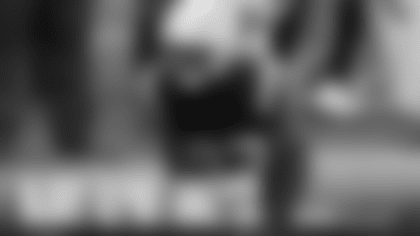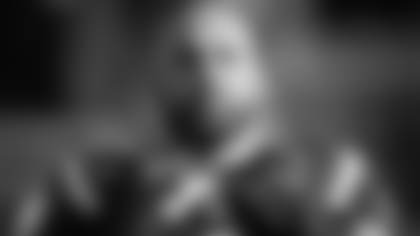NEW YORK (Dec. 7, 2006) -- After Len Dawson made his debut as a host of HBO's Inside the NFL in 1978, he couldn't critique his own work because his home city was not yet hooked up for cable TV.
"I live in Kansas City, Mo., and back then I never saw the finished product unless I called up friends in Kansas City, Kan., which did have HBO, and told them I was coming over to watch," Dawson recalled this week before taping the 30th anniversary show of what has become a television staple for football fans. "It's certainly changed."
All of pro football has changed in those three decades, of course. But the easygoing style and a willingness to broach controversial subjects have remained constants on the program. Through cast changes and competition from all brands of media, the camaraderie of the hosts, the humorous banter and pointed analysis have made Inside the NFL appointment viewing not only for fans, but for players throughout the league.
"This show was so original when it began -- no one was doing anything close to what this show was -- and it still has the best of all worlds. Not only do we have previews of upcoming games, but all of this incredible footage from NFL Films," said Cris Collinsworth, who now hosts the weekly program, along with Dan Marino, Cris Carter and Bob Costas.
"It's even more of an inside look at the NFL because of how it goes behind the scenes. It's like being in the locker room."
That was the show's mission when it debuted out of a studio in Philadelphia in 1977, with local announcer Al Meltzer and former Eagle Chuck Bednarik as hosts. The next year, HBO replaced them with Jets play-by-play man Merle Harmon and Dawson, who led the Chiefs to the Super Bowl IV title and was a sports commentator for a Kansas City television station.
A year later, Nick Buoniconti came aboard. He and Dawson clicked immediately and became an institution on the show, lasting through the 2002 season. Before partnering in front of the cameras, they were quite familiar with each other on the field.
"Nick and I started in the AFL in 1962, and I kept saying to him I was the reason he became a starter in New England," Dawson said. "I had a heck of a game up in Boston and Nick wasn't the starter. The coach then said he needed a better middle linebacker and Nick got the job."
Buoniconti got to repay Dawson on the set in 1987 when he informed the former star quarterback he had been elected to the Pro Football Hall of Fame.
For years, well before ESPN began flooding its networks with clips, the HBO show was the primary outlet for game highlights. But those highlights didn't always arrive as expected at the studios in New York.
"Len and Nick would do their segment and then we'd roll NFL films, and we'd go to air just like that," said Dave Harmon, vice president of sports production for HBO. "But they would bring up the films by car and what if the car got caught in traffic? From Philly to New York, you know that happens all the time.
"Sometimes, we were still shooting the second half of the show while the first half was on the air. It happened about three times that way. That's pressure."
Before Dawson and Buoniconti left the program after the '02 season, they had many on-location shows. Buoniconti recalled falling down while ice skating in Central Park "and just about getting a concussion." He also remembered riding an elephant at the San Diego Zoo.
Things are a bit tamer now, with Costas, Collinsworth, Marino and Carter -- helped by contributor Peter King -- generally sticking to the Manhattan studios. But when they do go out to conduct interviews, fireworks can fly.
Carter recently spoke with Chiefs running back Larry Johnson. Part of the conversation focused on how black players can relate much better to black head coaches, particularly in the case of Johnson and Herm Edwards.
After the piece aired, the four hosts discussed it passionately, with Costas in particular upset that Johnson and other blacks might respond better to a coach because of his color. Carter provided a comprehensive explanation centered on the significance of coming from similar backgrounds, and Collinsworth mentioned that many black players have echoed Johnson's thoughts to him.
It was riveting television and the kind of analysis the carriers of NFL games rarely get into.
"There are many issues we want to discuss and do discuss like that," Carter said. "It's part of what makes this show go."
Just as often, the three former players and Costas kid each other or poke holes in the football establishment, an approach Dawson and Buoniconti established in the 1970s.
It's that atmosphere that drew Marino to the show. Often reticent with reporters as a player even though he had his own TV program with the Dolphins, Marino never holds back on the HBO show.
"You've got to be honest and that's the most important thing in this job," he said. "Sometimes players divulge too much. I'd always answer football questions when I played, but I wouldn't get involved in the outside stuff. You have to be somewhat protective of the sanctity of the locker room and sanctity of the team."
And, now, it seems that anything goes, which is how HBO wants it.
"It's what differentiates us," executive producer Ross Greenburg said. "The viewers know when something is fake."
AP NEWS
The Associated Press News Service
Copyright 2006, The Associated Press, All Rights Reserved






























